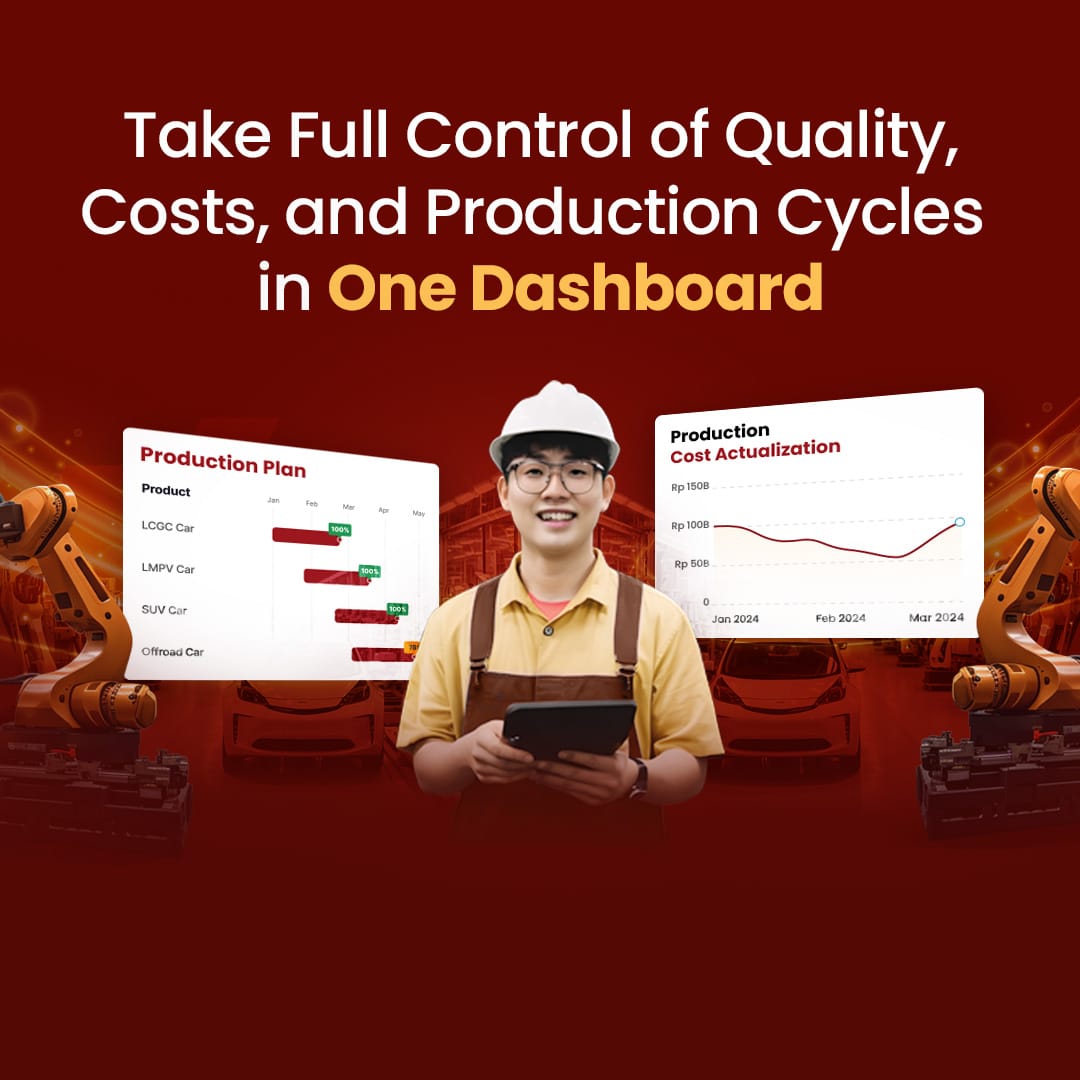In a recent study by the Manufacturing Institute, it was revealed that nearly 90% of manufacturing leaders view production planning as a critical component of their operational efficiency and competitive strategy.
Furthermore, Deloitte’s insights indicate that companies with advanced production planning capabilities are 20% more likely to experience market share growth and 15% more likely to achieve above-average profitability. This underscores the pivotal role that strategic production planning plays in enhancing organizational resilience and adapting to market fluctuations.
As the sector evolves, integrating sophisticated production planning methodologies becomes indispensable for manufacturers aiming to sustain and amplify their market presence.
Production planning is a critical process that ensures efficient manufacturing operations by coordinating schedules, resources, and outputs. Closely related to this is Production Planning and Inventory Control (PPIC), which integrates production scheduling with inventory management to meet organizational goals effectively.
Table of Content:
Table of Content
Key Takeaways
|
What is Production Planning?
Production planning refers to the process of creating a detailed strategy to achieve the goals and objectives of a production operation. It involves determining the resources, materials, and equipment required, as well as establishing a timeline for each production activity. The purpose of production planning is to streamline operations, minimize costs, meet customer demand, and ensure the efficient use of resources. It plays a crucial role in enhancing productivity, reducing lead times, and improving overall business performance.
Production planning ensures all resources are utilized efficiently for smooth manufacturing. A key component of this process is Production Planning and Inventory Control (PPIC), which focuses on aligning production schedules with inventory management to minimize waste and optimize resource use.
The Differences Between Production Planning and Production Scheduling
While production planning and production scheduling are closely related, they serve different purposes. Production planning focuses on determining what needs to be produced, how it will be produced, and when it should be produced. It involves coordinating various production activities to ensure the availability of resources, materials, and equipment.
On the other hand, production scheduling involves creating a detailed timeline and sequence for executing the production plan. It specifies the exact timing of each production activity, including start times, finish times, and dependencies between tasks. Production scheduling plays a crucial role in coordinating the timing of different production activities to optimize efficiency and meet customer demand.
Types of Production Planning
There are various types of production plan methods that can be utilized depending on the nature of the production process. These include:
- Batch production planning: Involves producing a specific quantity of products in batches, where each batch goes through the same set of production activities.
- Project-based production planning: Primarily used for unique, one-time projects where the production process is tailored to the specific project requirements.
- Flow production planning: Used in continuous production environments, such as assembly lines, where products move through a series of steps in a continuous flow.
- Process production planning: Focuses on optimizing the production process for products with multiple components or stages requiring specialized equipment and skills.
- Mass production planning: Primarily used for large-scale production of standardized products, where efficiency and cost-effectiveness are crucial.
Production Planning Steps
The production planning process involves several key steps:
- Forecast product demand: Analyze market trends, historical data, and customer inputs to predict future product demand accurately.
- Map out production steps and options: Identify the required resources, materials, equipment, and personnel for each production activity. Explore different production strategies and evaluate their feasibility.
- Choose plan and schedule production: Select the most suitable production plan based on factors such as cost, efficiency, and lead time. Create a detailed production schedule with specific timelines for each activity.
- Monitor and control: Continuously track the progress of production activities, monitor resource utilization, and address any issues or bottlenecks that may arise.
- Adjust accordingly: Regularly review and adjust the production plan based on changing market conditions, customer demands, or unforeseen circumstances to ensure optimal production efficiency and customer satisfaction.
Advanced tools like ERP systems can enhance production planning processes. These systems, when combined with effective PPIC strategies, automate production scheduling, optimize inventory, and provide real-time data for better decision-making.
Production Planning KPIs
Key performance indicators (KPIs) are essential for evaluating the effectiveness and efficiency of the production planning process. By tracking and analyzing these KPIs, businesses can identify areas for improvement and make data-driven decisions. Here are some important production KPIs to monitor:
-
-
Downtime
-
Downtime refers to the total time that production processes are not running due to equipment breakdowns, maintenance, or other reasons. Minimizing downtime is crucial for maximizing productivity and meeting production targets.
-
-
Setup time
-
Setup time measures the time required to set up equipment and prepare for a specific production activity. Decreasing setup time can help reduce lead times and increase overall production capacity.
-
-
Production rate
-
Production rate assesses the quantity of products produced within a given timeframe. Monitoring production rate helps identify bottlenecks or inefficiencies in the production process and enables businesses to optimize production output.
-
-
Overall equipment effectiveness (OEE)
-
Overall equipment effectiveness (OEE) is a measure of the overall efficiency and utilization of production equipment. It takes into account factors such as availability, performance, and quality to provide a comprehensive assessment of equipment performance.
-
-
Rejection rate
-
Rejection rate evaluates the percentage of defective or non-compliant products produced during the production process. Monitoring rejection rate helps identify quality issues and implement corrective actions to improve product quality.
-
-
On-time orders
-
On-time orders determine the percentage of orders that are completed and delivered to customers on time. Meeting delivery deadlines is crucial for maintaining customer satisfaction and loyalty.
By regularly tracking and analyzing these production KPIs, businesses can optimize their production processes, improve operational efficiency, and achieve better overall performance.
How Can HashMicro Help You with Production Planning Software?
HashMicro offers advanced production plan software designed to streamline operations, improve resource utilization, and optimize production efficiency. With their production plan software, businesses can automate and optimize their production processes, reduce lead times, minimize costs, and enhance overall operational performance.
The HashMicro production planning software comes equipped with a range of powerful features:
- Demand Forecasting: Accurately predict future product demand by analyzing market trends, historical data, and customer inputs.
- Detailed Production Scheduling: Plan and schedule each production activity with precision, ensuring efficient use of resources and meeting demand timelines.
- Real-time Monitoring: Track the progress of production activities in real-time, allowing for immediate intervention and adjustment if necessary.
- Reporting Capabilities: Generate comprehensive reports on production performance, enabling data-driven decision-making and continuous improvement.
By leveraging HashMicro’s production planning software, businesses can optimize their operations by streamlining workflows, optimizing resource allocation, and improving overall efficiency. The software’s intuitive interface and powerful features provide businesses with the tools they need to effectively plan and manage their production processes.
With HashMicro’s production planning software, businesses in Singapore can gain a competitive edge by ensuring efficient production operations that meet customer demands effectively.
Conclusion
Production planning is an essential aspect of effective operations management. By implementing a comprehensive production plan, businesses in Singapore can optimize workflows, streamline operations, and improve overall efficiency. Understanding the differences between production plan and production schedule, as well as the various types of production plan methods, is crucial for successful implementation.
To further enhance efficiency and productivity, businesses can utilize advanced production planning software such as HashMicro’s. With features including demand forecasting, detailed production scheduling, real-time monitoring, and reporting capabilities, HashMicro’s software can automate and optimize production processes, reduce lead times, and minimize costs.
Don’t miss the chance and try the free demo now!








































